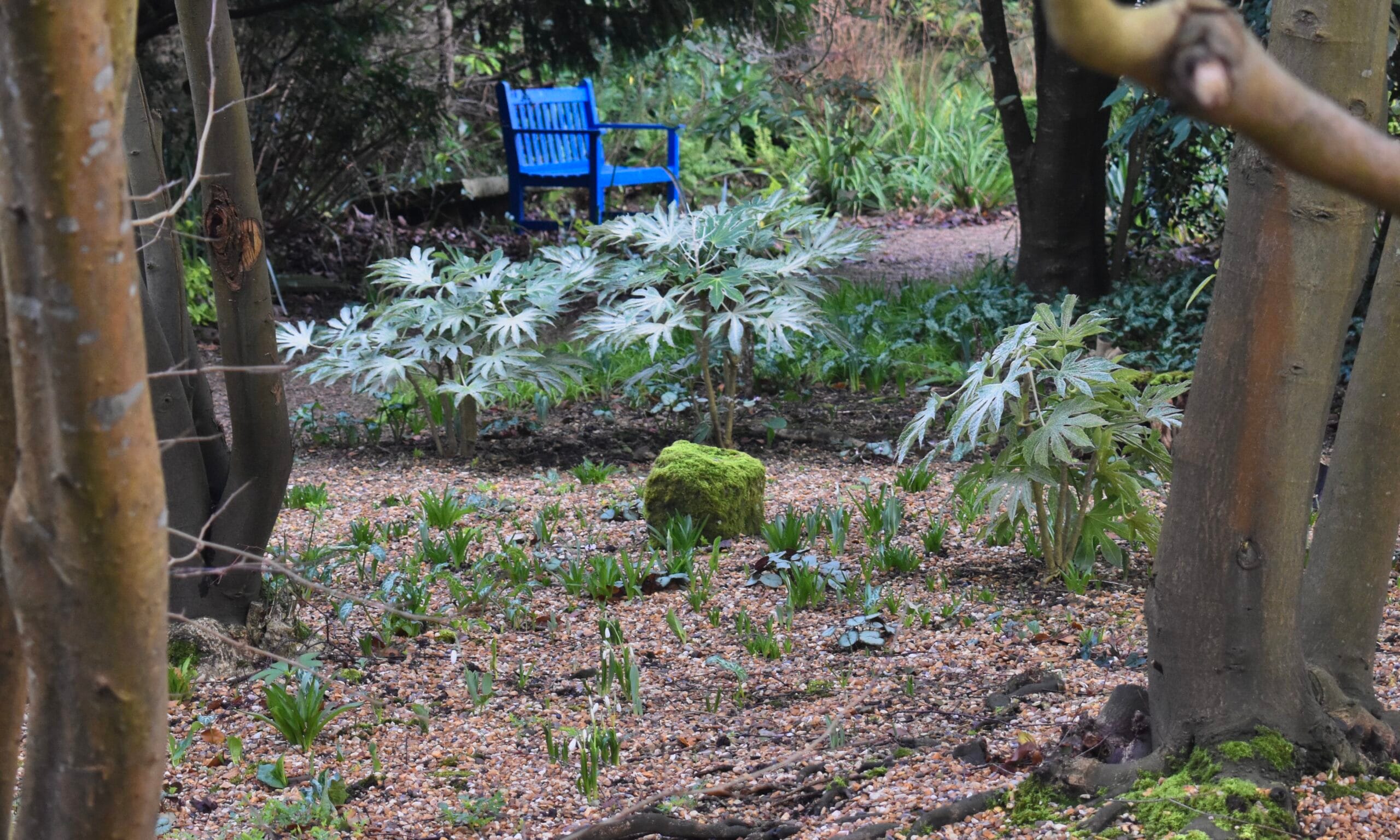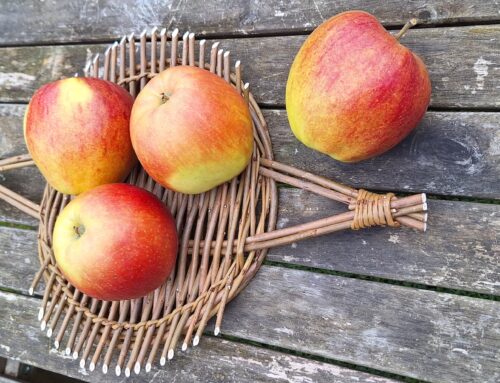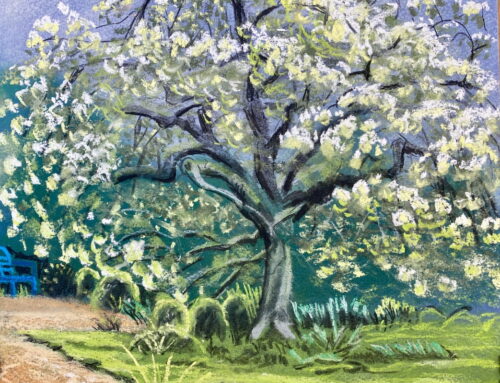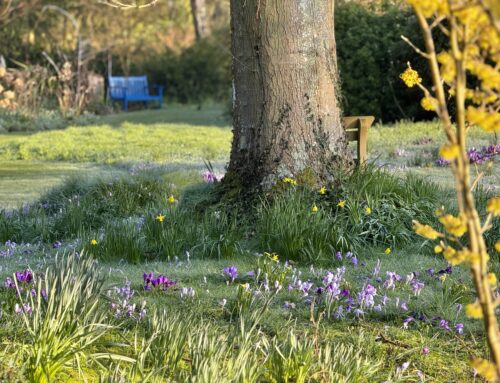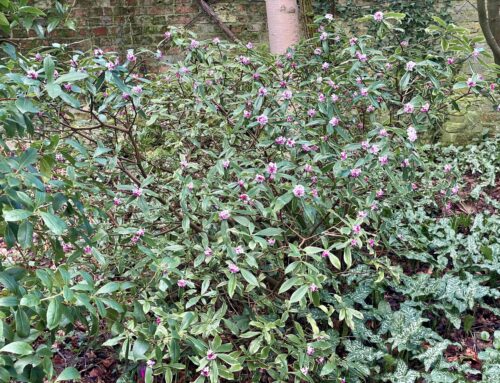Above: A large planting of Fatsia japonica ‘Spider’s Web’ at the top of the Nut Walk brightens up an otherwise dark corner of the garden.
One hallmark of the planting designs created by Joyce Robinson and John Brookes was their propensity to combine and contrast plants with different textures, for example combining plants broad-leafed plants with grasses.
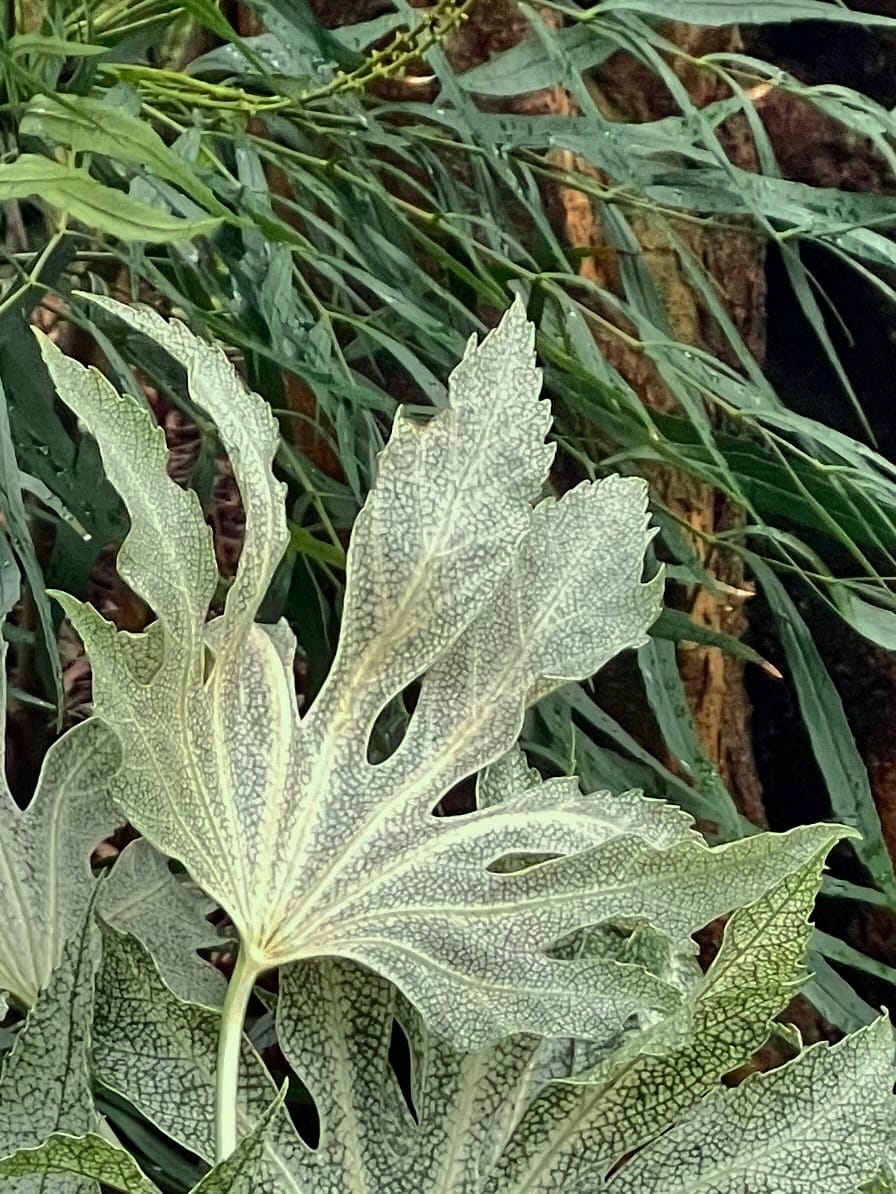
The variegated palmate leaves of Fatsia japonica ‘Spider’s Web’ contrasts well with the fern-like dark green foliage of Mahonia ‘Soft Caress’.
John also included many variegated plants to help liven up the structural plantings in his planting designs, using white and green or yellow and green leaves to provide the verisimilitude of sunlight in dark spaces.
John especially liked Japanese Aralia ‘Spider Web’ (Fatsia japonica ‘Spider Web’) because it provides both contrast and is variegated. Evergreen, its large, glossy, palmate, green leaves are distinguished by an intricate pattern of fine white lines that resembles the delicate silky configuration of a spider’s web. The leaves emerge frosted with white and gradually become greener as they age. The white lines are heaviest along the edges of the leaves, and the variegation changes with the seasons and as the plant matures. Happy in light to dark shade, the leaf pattern is strongest and shows up best in shadier conditions where it provides dramatic year-round interest.
We have several in the Garden. At the shady top of the Nut Walk, for instance, there is a grouping in deep shade that plays a dramatic role this time of year, contrasting well with the small bulbs and large structural plantings around it.
This fatsia is relatively slow growing shrub reaching up to 1-1.5 metres (3-5 feet) tall and wide. It develops dramatic waxy, loose clusters of unusual white flowers in autumn that are popular with autumn and winter pollinators, and followed by small, shiny, black ornamental berries.
A low-maintenance plant, it tolerates various types of moist and well-drained soil. Those who are fortunate enough to live near the seas will be pleased to learn that it also tolerates salty air. No matter where it is planted, however, it needs a sheltered position as its leaves suffer in heavy winds.
Resembling a semi-tropical or tropical plant, ‘Spiders Web’ is surprisingly hardy, surviving to temperatures down to -15 °C (5°F). In gardens where temperatures drop lower, it can be grown in pots that can be moved indoors in winter.
Fatsias are sometimes also referred to as ‘castor-oil plant’, but this is a misnomer. They should not be confused with the other plant known as ‘castor-oil plant’ which is Ricinus communis and is extremely poisonous. Even so, fatsia fruits are not palatable and the gardeners are well-advised to wear gloves when pruning them as the sap can irritate the skin. The name ‘fatsia’ derives from an old Japanese word for ‘eight’ which is the average number of lobes its leaves have, and the name ‘japonica’ unsurprisingly reflects its origins. Fatsias grow natively as an understory plant in southern Japan and South Korea.

